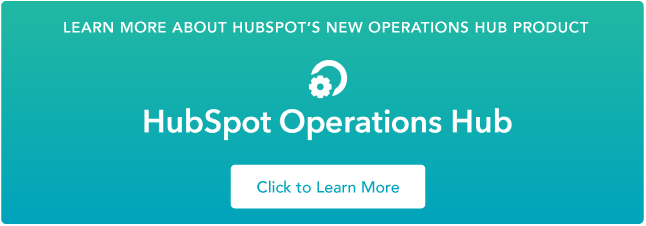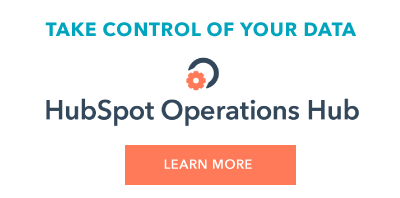The 80s were not only about the Rubik's cube, hip-hop, and the flattop hairstyle. A lot of technology that you still use was created back then. Such is the case of the database. The cornerstone of databases was that idea that data could actually be accessible and manageable, instead of being an abstract unreachable bundle.
With databases, a series of challenges around data management came along. Since then, time and experience have led data and IT experts to theorize and share best practices around data and its management.
Learning about the principles of data lifecycle management can be particularly helpful for growing corporations or enterprises trying to establish a structure for their data to flow through or refresh an existing one.
However, nowadays it's not only enterprises that manage big volumes of data, but medium-sized or even small businesses have more and more requirements related to data. They too can start thinking about data lifecycle management at an early stage of their business.
What Is Data Lifecycle Management?
Data Lifecycle Management (DLM) refers to a policy-driven structure or model through which data flows in order to optimize its useful life. It's represented by a series of steps or stages that typically begin with data collection or creation and end with data destruction or re-use.
To put it simply, DLM helps you define and organize the cycle through which data must go in order to get the most out of it until it's deleted.
Next to DLM, there are lots of parallel or complementary models that can guide you through the countless challenges of data management. However, this approach has become a prototype for its simplicity and efficiency.
Each company must adjust DLM to its own technology ecosystem. You'll find online a variety of graphics for DLM with more or fewer stages.
Data Lifecycle Management Stages
Since each company has its own business model, software stack, and types of data, there are lots of variations on DLM. When you are researching online about the subject, you'll notice different words to describe the stages or maybe even the approach.
For instance, the first stage could be referred to as data collection, acquisition, capture, creation, etc. depending on the characteristics of the operation through which data becomes part of the database.
Here's a description of the most general stages of DLM:
-
Data collection
It refers to the stage where a new value enters your company's data infrastructure. It can be either hardware or software. For this phase, you must establish a set of rules to gather data in standardized formats so it can be accessible and manageable later on.
Those rules or policies must be adequate to each type of data collected. So you should specify policies for employee data, partner data, accounting, etc. For customer data, you must do so respecting applicable data privacy regulations.
During data collection, you can start using initial categories such as 'sensitive data', 'internal data,' or any other label that helps you decide how to manage or process data in the further stages.
-
Data Storage
Data storage best practices should depend on its use. Collected data can become an active asset and be used/reused, or it can be inactive, in which case it can be archived or deleted. In either scenario, you need to establish policies around its storage. Backup and recovery options are also important to keep in mind.
As an example of these policies, you could stipulate that inactive data that might still be relevant in the future should be stored in a cold storage environment (which would help you reduce costs).
-
Data Maintenance
This stage covers several processes to around data, including inspecting and enriching data before making it accessible for the right users.
The general goal in this phase is to make sure that relevant data is available for the right team when and where they need it. So after validating and enriching the data, you'll need to move it to the right place. That's where data integration steps in.
Data integration is perhaps the most complex and important part of this stage. In some cases, you'll need an Integration Platform as a Service (iPaaS) or another third-party solution.
Some companies, especially for accounting and investment decisions, add another step after this one called data synthesis.

-
Data Usage
This is where data will play a role in business decisions. During the previous stages, your data was collected, organized, inspected, and moved to the right platform. At this point, it must be easy for administrators or stakeholders to locate this data and make decisions based on the information it reveals.
You can have an additional step right after this one for data publication. Protocols for this stage are important in companies that share information outside the business environment. An example of data publication policies could be a set of rules for sharing reports with partners or clients.
-
Data Cleaning
The stage of data cleaning includes deletion, purging, destruction, and archiving. Your data is growing every day and storing it is quite expensive. That's why when data is no longer useful, it's a good idea to delete it or purge it from your databases.
For inactive data that might be useful in the future, you can also create policies on how to archive it or separate it from the active data.
All the policies around the disposal method are part of the data cleaning stage.
Benefits of Data Lifecycle Management for Enterprises
- Helps you comply with the regulations and requirements for data retention. Each industry has its own regulation regarding data. There are also local or regional laws to protect personal data that may apply.
- Guarantees efficiency. You'll have access to relevant information at the right time. When you implement DLM, you'll set the standards to automate the validation, enrichment, and integration of data.
- Offers security. Across all the stages, you are considering the most secure ways to manage data. For data storage, you also create contingency plans in the event of an emergency.
- Increases the value of your data. Having quality data -- and ensuring its integrity -- makes data a much more valuable asset for your company.
Overall, keeping the stages of DLM in mind helps you visualize the journey of data through your company in order to build a plan to manage data.
How Can Data Lifecycle Management Help Small Businesses?
In general, the benefits of DLM can also apply to smaller businesses. Creating and implementing all these policies and automation processes may seem excessive if you're running a very small business; however, it's never too early to consider the DLM stages and come up with a data management plan that can grow with your company.
In a smaller scale, you can consider:
- For data collection: Using web forms on relevant content.
- For data storage: Placing inactive or internal data in cloud-based storage services.
- For data maintenance: Using iPaaS tools like PieSync and Zapier for integration or synchronization.
- For data usage: Creating documentation to help stakeholders locate data.
- For data cleaning: Establishing a periodic process to delete unnecessary data.
Get Started with DLM
As your business grows, the size and complexity of your data will also increase. Regardless of your business size or the IT infrastructure you manage, creating a structure based on DLM allows you to visualize the entire journey of your data across the organization.
Having a full picture of your business data helps you to identify vulnerable points where policies are necessary to keep your data safe. At the same time, it empowers you to get the most out of your data to make informed decisions for your business.
Originally published Aug 18, 2020 10:29:25 AM, updated August 18 2020


